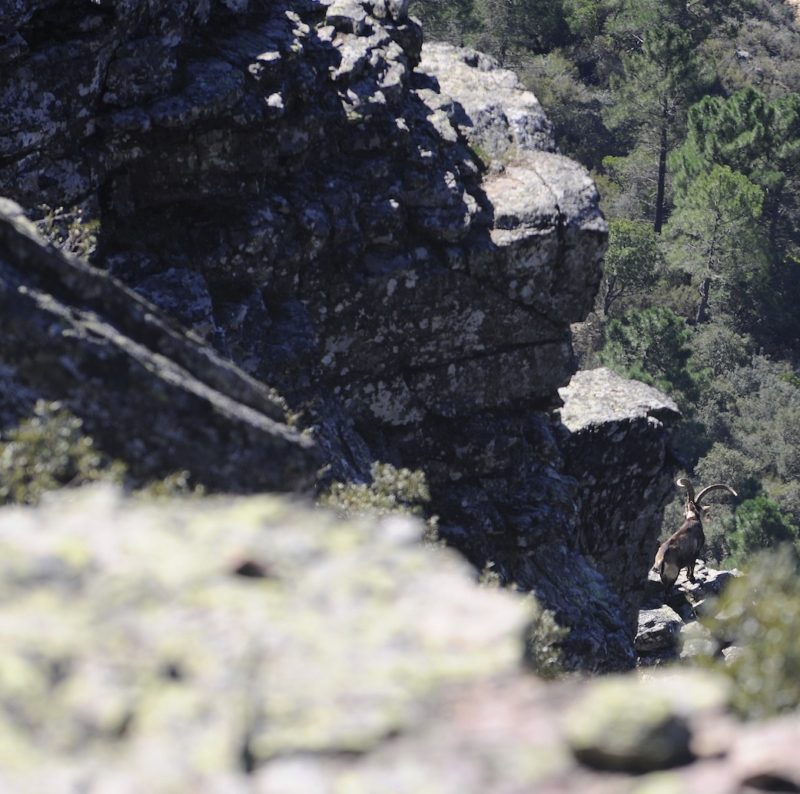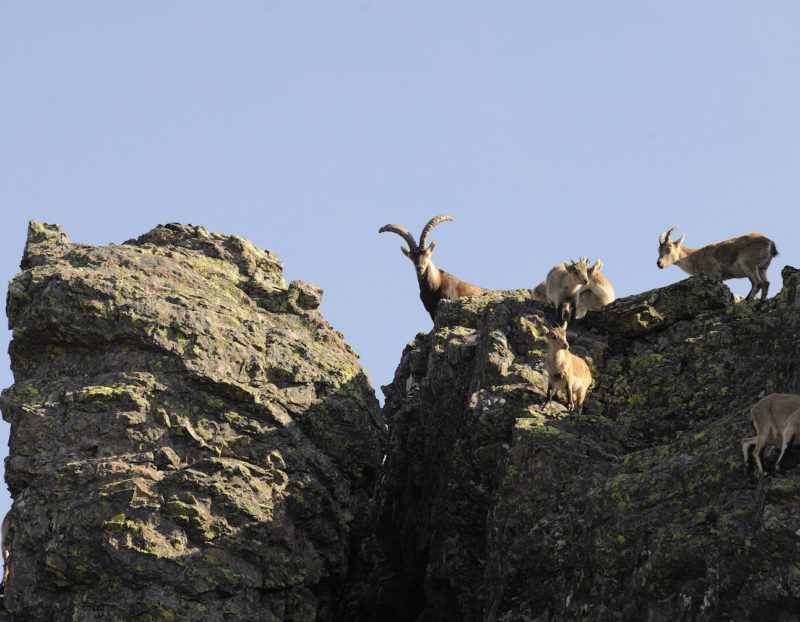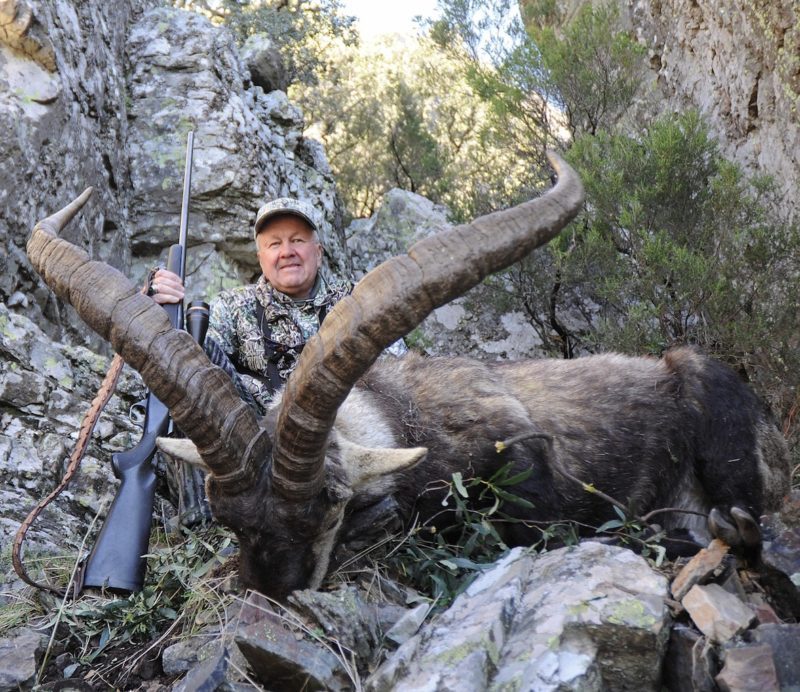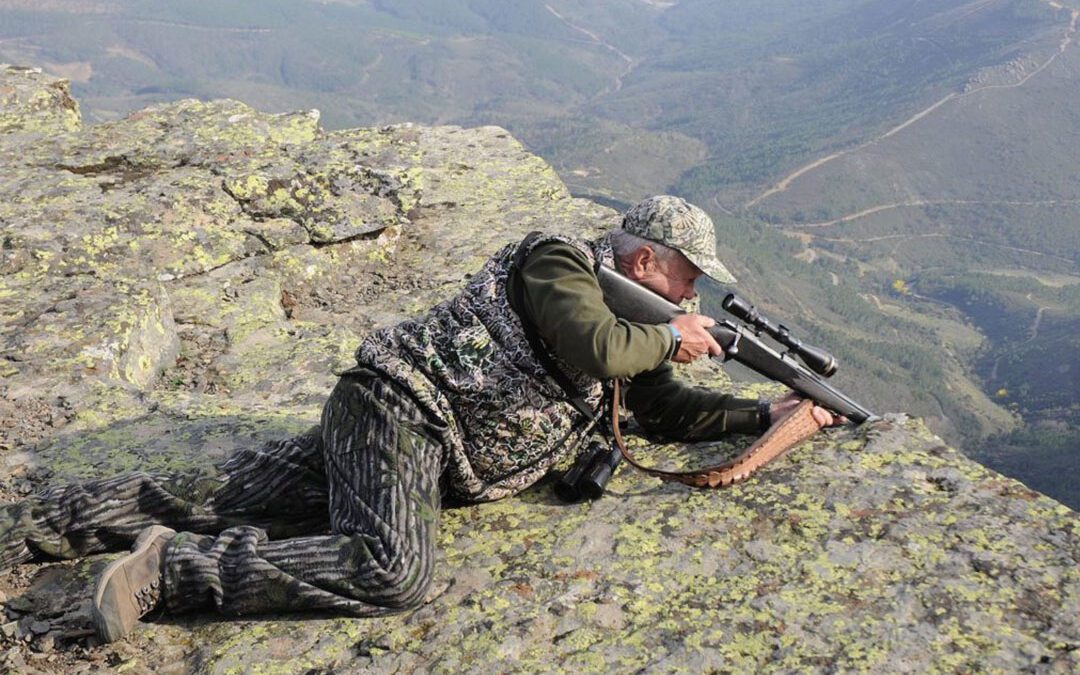Suddenly reality set in, and I was overwhelmed by the fact that I was back in Spain–this time after my second ram—a Gredos—in the most beautiful, if not most dangerous, terrain in all of Spain.
After Jan and I enjoyed touring the historic city of Madrid, Vicente Gil, owner of Casa Hispanica Outfitters, transported us two hours northwest to Salamanca. There we enjoyed traditional Spanish cuisine, and a tour of the postcard-like, nine-century-old Salamanca Cathedral. We also toured the oldest university in Spain, University of Salamanca, founded in 1134.
Later that afternoon, we walked the narrow streets of La Alberca adorned with ubiquitous medieval architecture, a network of narrow cobblestone roads, and thatched roofs. Founded in the 1300’s, it was the first village declared a National Historical Monument.
Ten minutes out of La Alberca was our temporary residence, a castle located at the foot of the Sierra de Francia Mountains.
The mountain range was part of Spain’s park system. Our guides worked for the park system year around, oftentimes establishing fire lanes throughout the mountains and, most important to me, learning the whereabouts of outstanding rams.

Spotting my own ram in particularly dangerous terrain only made my hunt more rewarding.
In response to our presence, the Ibex we disturbed that first morning dashed up and over several Volkswagen-sized boulders with ease and disappeared. Hoping this group would pause once out of sight, we pursued them up the steep ridge. But once we reached the zenith above a vast, deep boulder-ridden valley, the rams were nowhere to be seen.
Three hours of rigorous hiking later, we found the animals bedded down 250 yards below us, and Vicente pointed out the largest ram. With my rifle on a backpack positioned at the edge of a precipice extending precariously out over a 500-foot drop, I held the rifle as steady as I could and fired, hitting just above the largest ram. Immediately erupting from their beds, the rams dissipated in the Armageddon-like rocky terrain, culminating our morning hunt.
After lunch in La Alberta, we hiked a steep mountain fire trail through a mature pine forest until the evergreens relinquished to open ground littered with boulders and unstable talus rock. The guides were moving swiftly as they wanted to reach the top of the mountain before the warm rays of sunlight enjoyed by the goats were eclipsed by the colder evening air. Before achieving our objective however, I spotted a good ram standing on a rocky outcrop.
Getting my guides’ attention with a click of my fingers, I pointed out the ram. Unquestionably a shooter, we descended the mountain, jumping from boulder to boulder, some as large as a pickup, to where I could get off a shot. Once we arrived to within 100 yards of where the ram was first spotted, it was gone only to reappear below us on a massive rock slab. Solidly anchored on Vicente’s backpack, my 7mm barked, and the silver medal ram collapsed, plummeting 70 feet into a deep draw.

Ibex thrive in dangerously rocky terrain and negotiate it with ease.
Getting to the ram was challenging, if not dangerous, but once I held the long heavy, lyre-shaped horns in my hands, all the energy exerted was eclipsed by jubilant celebration.
On our second morning in the mountains, we made a relaxing excursion to Pena de Francia, the second highest mountain peak in the park, to see an ancient monastery and a shrine of the Blessed Mary, located higher than all other shrines of the Blessed Lady in the entire world. Three quarters of the way up the winding road, we spotted ibex, and I stalked close enough to gather some incredible images.
Later in the afternoon I was asked if I would take a ewe to assist in the management of the herd. The thought of spending more time on the mountain was exhilarating, so once again we followed our guides through a mature pine forest up the mountainside until we reached the apex of the wind-swept, treeless mountaintop to begin searching for our quarry.
I thought the hunt would be less than challenging since we saw an abundance of goats the day before. But it wasn’t until we covered several miles over dangerously rocky terrain that we located a herd. As I glassed the animals, I spotted a ram with an injured leg. Vicente pointed out the animal to the park superintendent Santiago, and we received the green light to take the animal.
Lying on the very edge of a plate-like rock slab extending out over a serious 800-foot drop-off, with my rifle anchored on a backpack, I gently squeezed the trigger, and the ram dropped in its tracks before the echo of the shot was heard.
The approach to the animal was not only precipitous, it was laden with loose shale. Not a quarter of the way down I slipped and rolled four times, banging up my rifle before regaining some traction. Unhurt, we continued to negotiate our way around vertical jagged rock formations, some over 50 feet tall, to the downed animal.

All the effort it took to get to my beautiful ram dissipated once I held its majestic lyre-shaped horns.
Once the eight-year-old ibex was recovered, we made the long, arduous trek back to our vehicle, paralleling the mountainside on a goat trail instead of climbing back up the dangerously steep slope.
On our last day we visited the city of Segovia where we dined on a Spanish delicacy, baby pig, in one of the city’s oldest homes now turned restaurant. We also witnessed the brilliance of Roman architecture, viewing the expansive aqueduct constructed by the Romans over 2,000 years ago. The aqueduct is one of the most significant and best-preserved ancient monuments left on the Iberian Peninsula. The massive rocked columns spanning the city once provided water to its inhabitants from the mountains miles away.
Back in Madrid on our last evening, we welcomed the rest, but not without booking our return for the third member of the Grand Slam—the Southeastern ibex—the following spring.

